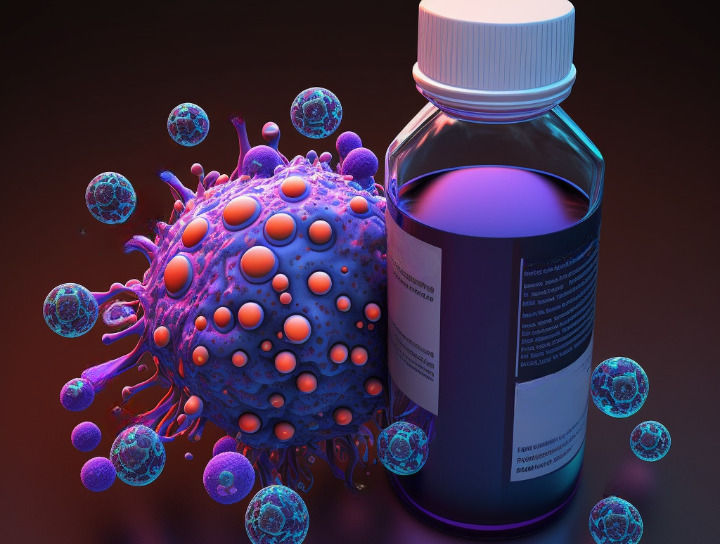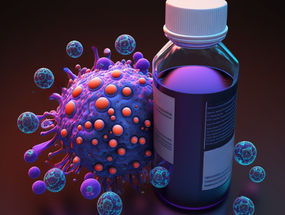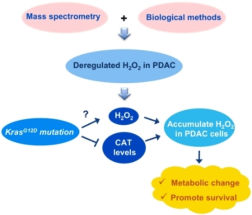Hydrogen peroxide as a target in the fight against cancer?
Pancreatic cancer cells contain high levels of hydrogen peroxide
Reactive oxygen species (ROS) are reputed for their involvement in carcinogenesis. Results from a study published in the journal Angewandte Chemie have now shown that the level of one such ROS, hydrogen peroxide, is significantly higher in pancreatic cancer cells, unlike the level of other reactive oxygen species. This makes hydrogen peroxide an exciting target for cancer research and treatment.

Symbolic image
Computer-generated image

© Wiley-VCH


Reactive oxygen species play an important role in the functioning of our cells. They are formed during cellular processes and can target and modify cell building blocks such as lipids and other molecules. They are usually kept in check by the cell to prevent them accumulating and becoming too harmful. However, in cancer cells, this up-and-down-regulation appears to be disrupted, making reactive oxygen species a hot topic in cancer research.
Despite this intense interest, these tiny molecules are very difficult to analyze due to being extremely short-lived. A team of researchers led by Renato Zenobi of ETH Zurich, Switzerland, have now been able to selectively measure the concentrations in cancer cells of three prominent members of this group of compounds—hydrogen peroxide, superoxide, and hydroxyl radicals. Using specific chemical reactions, high-resolution mass spectrometry and biological assays, the team detected the levels of the three species separately. They also showed that hydrogen peroxide is significantly increased in pancreatic cancer cells compared to other ROS molecules, and that this increased level makes a critical contribution to the survival of cancer cells.
The study also showed that cancer-promoting mutations lead to suppression of the genetic expression of enzymes that break down hydrogen peroxide. Higher concentrations of hydrogen peroxide altered the lipid composition of the cells. Because cancer cells divide very quickly, they require huge amounts of lipids to form new membranes. The team observed that suppression of the enzyme catalase, which breaks down hydrogen peroxide, led to more lipids typical of cancer cell membranes.
The authors concluded that down-regulation of hydrogen peroxide is disrupted in pancreatic cancer cells, which is why they were able to detect more of this ROS. Because it was clearly only hydrogen peroxide, and not the other reactive oxygen species, that was incorrectly regulated, the team proposes differentiated detection of these molecules in the future, rather than simply detecting reactive oxygen species as a sum parameter. New analysis techniques, such as the team’s powerful mass spectrometry method, make this distinction possible, they argue.
Original publication
See the theme worlds for related content
Topic World Mass Spectrometry
Mass spectrometry enables us to detect and identify molecules and reveal their structure. Whether in chemistry, biochemistry or forensics - mass spectrometry opens up unexpected insights into the composition of our world. Immerse yourself in the fascinating world of mass spectrometry!

Topic World Mass Spectrometry
Mass spectrometry enables us to detect and identify molecules and reveal their structure. Whether in chemistry, biochemistry or forensics - mass spectrometry opens up unexpected insights into the composition of our world. Immerse yourself in the fascinating world of mass spectrometry!

























































